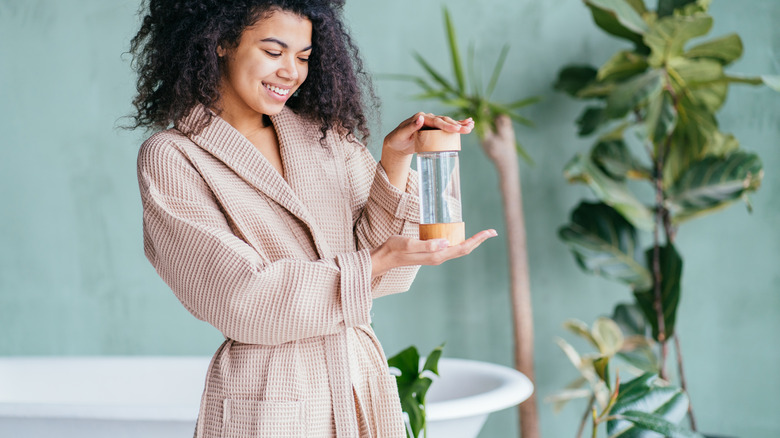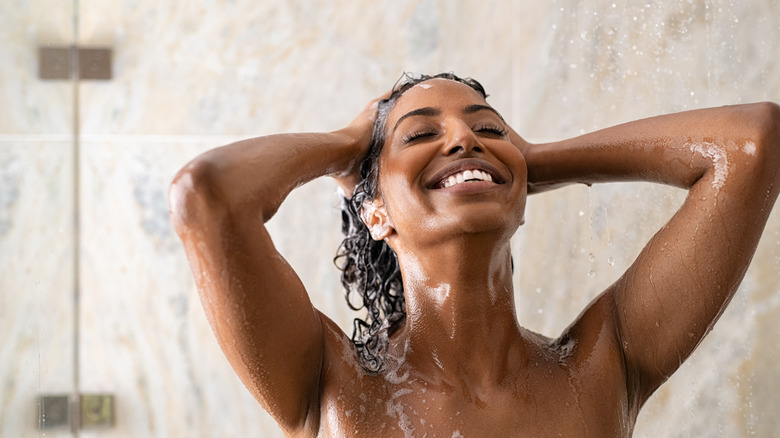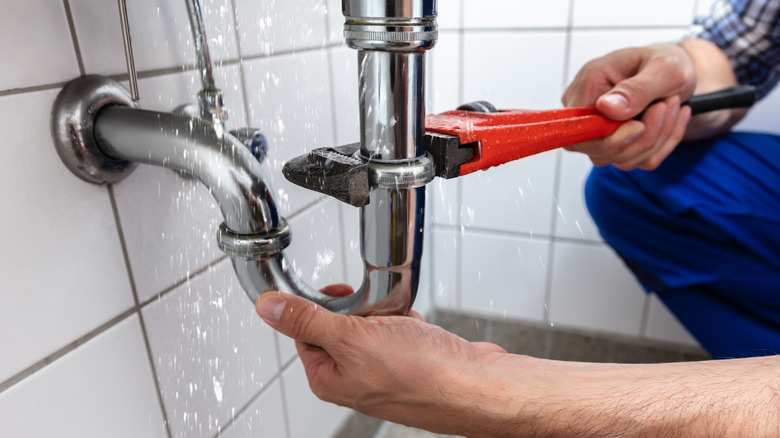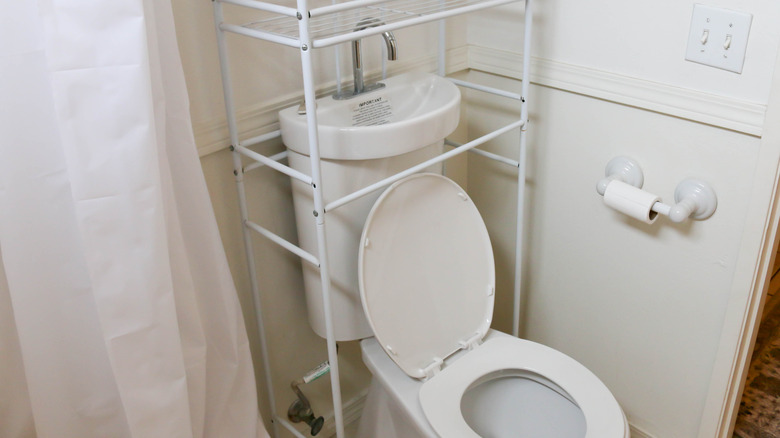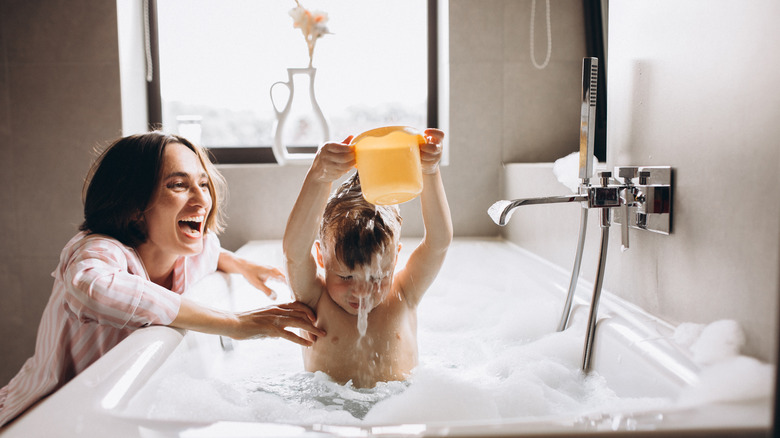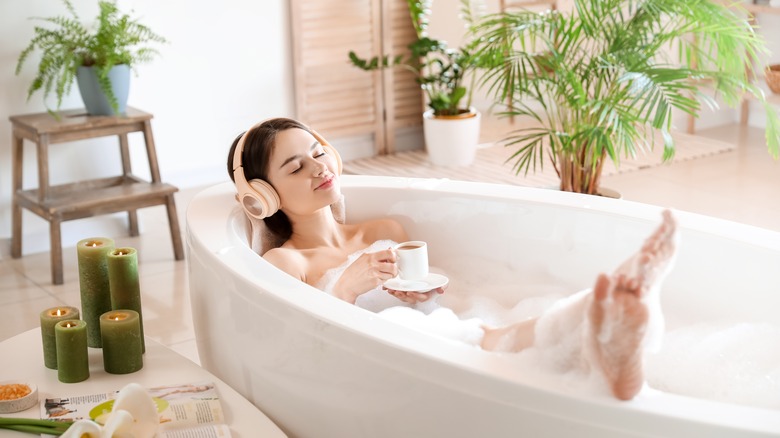The Best Tips For Saving Water In Your Bathroom
Are you wondering how to save some money with the soaring rate of inflation and household bills? Conserving water in your home, especially the bathroom, is an excellent course of action. Bathrooms are one of the most significant sources of water wastage in most residences. According to Water Use It Wisely, conserving water helps create a more eco-friendly home, enabling you to actualize some of your green goals. You won't just save water and reduce energy bills, but you will also be doing something good for the environment.
Conserving water is not hard, especially if you build or remodel your house with efficient water-saving appliances. You might not realize this, but those small leaks and drops might be the cause of your rising water bills. Even if you don't have a water meter to worry about, your decision to save water can positively impact the natural water supply. Considering the recent rising cases of droughts, water conservation is the most decent thing to do. Here are some simple tips to help you save water in your bathroom.
Limit your time in the shower
The bathroom shower is a very personal space, especially after a long day. However, you don't need long showers to feel clean or pampered. The time you spend in the shower can save or drown you in bills. Having that water running while doing other activities like shaving or brushing your teeth doesn't help either. If your shower takes time to run hot water, you can do other things with the running cold water or tap it in a bucket.
You spend roughly 10 liters each minute you take a shower. The longer you stay, the more water you use, not to mention the energy bills awaiting you. Bathroom City recommends using a stopwatch timer and shutting off the shower while scrubbing your body. Why not go all the mile and invest in modern showers to save some coins? Imagine if your bills dropped significantly by just taking a short shower. This idea should be an excellent, motivating factor.
Address the leaks and drips right away
Leaks and drips don't necessarily apply to the bathrooms only but to the entire water source in your home. That drip you constantly ignore can cost you up to hundreds of gallons of water. Don't ignore that drop in your water closet, either. A leaking toilet or faucet doesn't mean collecting water in buckets; it could be tiny droplets that significantly impact your water meter. In case of any leak in your house, fix it as soon as you come across it. The best way to recognize if your water sources have any drips or leaks is by regularly checking the faucets, toilets, and showerheads.
Although you won't always come across any sign of dripping water, you can monitor how much water you use as the leakage could be from somewhere else. Build with Ferguson suggests adding some food coloring in the toilet tank to see if it's leaking. If you see the coloring in the toilet bowl within a few minutes, your toilet leaks. Replace such leaking or dripping bathroom items or call a plumber to fix them immediately.
Install water-conserving faucets and toilets
Currently, you can access various water-saving bathroom fittings, from showerheads and toilets to faucets and taps. A standard toilet and showerhead use more water, so switching to water-conserving options can help limit the water flushed or used. One good example is a rimless toilet. An eco-friendly low-flow toilet is highly efficient and only flushes a few liters of water. Some high-efficiency bathroom products come with a double flush for solid and liquid waste; thus, less water is wasted when flushing.
Using high-tech faucets that help reduce the amount of water you use could also come in handy. Motion sensor taps help you avoid wasting water since it will only flow when it senses the movement of your hand. Modern showerheads also enable you to set your shower length time — once it clocks that limit, it switches off. Those with sensors only allow water flow when you are under the showerhead. You can reduce the water used by stepping away when you lather up or wash your hair. Victoria Plum explains that you need to do your research expansively when shopping for these products to get one that is efficient enough.
Avoid bathtubs and take a shower instead
The average amount of water one uses for showers is 20 to 25 gallons, and a bath, on the other hand, takes over 50 gallons of water, per Badeloft. If you fill your bathtub with water to the brim, you will use it even more than someone who takes a shower for 10 minutes. This shows how much water we waste on bathtubs when cleaning our bodies. Benjamin Franklin Plumbing explains that the best way to address this is by shutting the drain when you shower.
Use that bathtub for only treating and pampering yourself occasionally, and hit the shower instead. You will save so much water if you switch from baths to showers. As mentioned before, it gets even better if you take shorter showers and turn them off while scrubbing. If you love taking longer showers, chances are there won't be any difference in the water you use.
Fill the bathtub halfway
If you delight in the luxury of soaking in water, you can fill a bathtub halfway. This will help you save water and also avoid spills all over the place. According to Naaree, one of the secrets of conserving water in the bathtub is plugging the drain first and adjusting the temperature as it fills. Waiting for the water to get hot before jumping in results in significant waste.
Another tip is to grab a bucket and tap the running water as you wait. You can later use the collected water to clean the bathroom or the garden. Go for steam baths since they use less water. If you like to fill your tub, the best option is to go for more minor options with lower overflows. Changing these bathtub behaviors can help you save many gallons of water in the bathroom, ultimately reducing your bills.
